This is the biography of Mother Teresa of Calcutta.Mother Mary Teresa was an Indian-Albanian Roman Catholic nun and missionary. Mother Teresa was born in Macedonia. From a young age, she was fascinated by the lives and service of missionaries in Bengal. So, when she was a teen, she decided to become a nun and serve the needy. This decision laid the foundation for the religious life that she lived in the future. Mother Teresa devoted her entire life to the poor and homeless. She aimed to provide them with all the help they would need. So, she founded the organization called “Missionaries of Charity.”
The organization was a congregation of more than 4000 nuns devoted to helping the poor and the needy. Her organization provided shelter for the homeless who were suffering from AIDS, Leprosy, and other diseases. It also provided food and built medical facilities, schools, and counseling centers. Her contribution to the people, whom the society ignored and cast away, was remarkable. So, she was awarded the Nobel peace prize in 1979. Read the biography of Mother Teresa of Calcutta to ride along the 87-year journey of a young girl, who gave her life to the needy and her soul to the almighty.
Childhood
Birth
Nikola and Dranafile Bojaxhiu were both Albanian. Nikola came from a wealthy family of merchants. Being a tradesman and entrepreneur himself, he moved to Skopje, a commercial city in the Ottoman Empire. There, he partnered with an Italian merchant who sold a wide variety of goods ranging from oil to leather. Soon, he started traveling to different parts of Europe on business. As a result, his business flourished, and he became a rich and important person in Skopje. Nikola and Dranafile Bojaxhiu had two children – daughter Aga and son Lazar. On August 26th, 1910, after they moved to Skopje, Dranafile gave birth to a girl. They named her Agnes Gonxha Bojaxhiu. This girl would grow up and later make her name known throughout the world as Mother Teresa.
Father’s death
Even though Nikola was a strict father who wanted his children to achieve high standards in their lives, he also entertained them with stories of his travel. So, the children eagerly awaited his arrival from business tours. Nikola was very sociable and kind. So, a wide variety of people, including the city’s poorest to the Archbishop, visited him often. Even though people from all walks of life visited Nikola’s home, the poor were especially welcome. Nikola often instructed his children to treat the poor with dignity and respect and share their meals with the needy.
Nikola was also very patriotic. So, he offered financial support to the Albanian freedom fighters. Therefore, when Albania declared its independence from the Ottoman empire in 1912, he was overjoyed and celebrated it. However, the same feelings of patriotism would ultimately turn against him. Seven years later, while attending a political gathering to include Kosovo into the Greater Albanian empire, he was murdered. Agnes was just eight years old at that time.
Mother’s virtues
After Nikola’s death, everything changed for his family. Nikola’s Italian partner took away all his properties. At the same time, Dranafile’s relatives took away her ancestral properties because she didn’t have any documents to validate her claim. So, suddenly, Nikolas’ family lost all their material possessions except the house they were living in.But Dranafile, Agnes’ mother, did not let the grief overcome her. She started sewing and selling clothes to support her family. More importantly, she taught her children the importance of virtues like generosity, kindness, compassion, and devotion to God. Dranafile was a mother who taught her children by example. She regularly took care of people who were abandoned by their families and children whose parents had died.
The Journey begins
The desire to become a nun
Little Agnes grew up looking at her mother’s act of kindness. These acts of kindness ignited in Agnes a desire to become a nun and help those in need. So, when she was just twelve years old, she decided to become a nun. When she conveyed her decision to her mother, surprisingly, her mother was not surprised. Agnes was a weak child since birth. So, her mother had a premonition that Agnes would leave them soon, either by death or by becoming a nun.
Even though she wanted to become a nun, Agnes was not sure if that was the right thing to do, and if that’s what God wanted. Being a religious Christian, Agnes went to the church regularly. Once, she asked Father Jambrekovic how she can find out if becoming a nun was the right thing to do. Father Jambrekovic replied that the joy in doing something was the important thing. It was proof that it was the right thing to do. So, she was soon convinced that becoming a nun was her true calling and decided to go to Africa to serve the needy.
The desire to go to India
In 1924, several priests from Yugoslavia went to Calcutta in India for missionary work. They sent back letters to Father Jambrekovic describing their missionary work among the sick and the poor. Until then, Agnes had wanted to go to Africa. But after reading the letters, she was very impressed and decided to go to Calcutta.
She neither knew English, the local language of Calcutta, Bengali, nor the widely spoken language of India, Hindi. She knew that she might never meet her family again. However, her conviction to become a nun was stronger than her desire to live with her family. So, in 1928, when she was just 18 years old, she left home. Her mother and sister accompanied her until Zagreb, in Croatia. From there, Agnes and another Yugoslavian woman went to Ireland to join the Sisters of Loreto. They started learning English, which was the official language of the Loreto sisters in India.
Marie Therese
Birth
Marie Françoise-Thérèse Martin was born in 1873 in France. Her father wanted to be a monk, and her mother wanted to be a saint. So, her entire family was very religious, and her elder sisters became nuns.
Therese saw suffering very early in her life. When she was four years old, her mother died. After her mother’s death, her elder sister then became her mother. Five years later, her elder sister went to a convent to become a nun. The departure of her sister, who was her second mother, was extremely painful to Therese.

The first divine intervention
A few months later, Therese became extremely sick. People thought that she was going to die. So, her elder sisters started praying to the statue of the Virgin Mary. Looking at them, Little Terese started praying to her too. At once, Virgin Mary answered Terese’s prayers by appearing before her and smiling at her. Suddenly, Therese was cured.
This divine intervention changed her life. So, she started praying regularly and wanted to become a nun.
The second divine intervention
Becoming a nun requires extreme willpower. However, as a child, Therese was emotionally sensitive. She would start crying if someone criticized her. She knew that she could not survive life in the convent if she was so weak. So, she prayed to Jesus to make her emotionally strong, so that she could go to the convent and become a nun. However, Jesus did not answer her prayers. But she didn’t give up and kept on praying. As a result, after several years, on the Christmas eve of 1886, Jesus answered her prayers. He came to her heart and made her emotionally strong, something that she herself couldn’t do.
Joining the convent
Thus, when she was 15 years old, Therese had become emotionally stronger. So, she decided to join the convent. However, the superior of the convent declined her request because she was not old enough. So, she went to the Bishop and requested him to let her join the convent. When he too declined, she went to Rome and asked the Pope to let her join the convent. Thus, even though she was a little girl, the love for God gave her a will of steel. So, she was permitted to join the convent.
After joining the convent, Therese wanted to become a saint. However, she knew she couldn’t do great deeds like the other Christian saints. But she thought that God wouldn’t have planted a desire in her if it was impossible to achieve. So, she decided to become a saint in her own way. Therefore, she started sacrificing little things for the love of God. At the convent, even if she was humiliated, she always kept smiling. She prayed for others, even if they have wronged her. Even though she was only given the leftovers, she always ate her food without complaining.
When she was 23 years old, Theresa started coughing up blood due to Tuberculosis. But she did not tell about it to anyone until it got serious and others found out. Despite the unbearable pain she was going through, her faith and her love for God kept her alive and smiling.
Becoming a saint
Therese was not afraid of dying. But she was afraid of dying young without achieving anything. So, after her death at the age of 24, her elder sister printed her autobiography and sent it to 2000 convents. Marie Therese’s tragic life, her love for God, and her way of sacrificing little things for him appealed to thousands of Catholics all over the world. It taught people across the world that they don’t have to do great deeds to be loved by God. Even the little sacrifices they make for him makes him happy. So, 28 years after her death, on May 17th, 1925, she was declared a saint by Pope Pius XI.
Agnes Gonxha Bojaxhiu becomes Mary Teresa
Agnes Gonxha Bojaxhiu was one of the thousands of people who were inspired by Marie Therese’s story. Marie Therese had shown Agnes that divinity can be achieved by doing small things. So, due to the love for Marie Therese, the little flower, when she was in Ireland, Agnes changed her name to Mary Teresa of the Child Jesus.
Sister Teresa
After spending six weeks in Ireland, Agnes, now Mary Teresa, and her companion set sail to India on December 1st, 1928. On January 6th, 1929, they reached Calcutta, the capital city of the state called Bengal, in India. From there, she moved to Darjeeling, India, and began teaching at St. Teresa School while learning Bengali. Sister Teresa took her first religious vows in 1931.
As a teacher, Sister Teresa witnessed the poverty-stricken conditions in which the slum children of the school lived. Most of the children were dirty and untidy. But she had no material wealth to share with them. So, she would often place her hand on each dirty child’s head. This brought her extreme joy. At the same time, this small act made the children happier, and they got closely attached to her. She was determined to eradicate poverty through education.
On May 24th, 1937, Sister Teresa took her final vows to lead a life of chastity, poverty, and obedience. By doing so, she took the title of ‘Mother,’ which was the common custom for Loreto nuns. Thus, in 1937, Sister Teresa became Mother Teresa.
Mother Teresa
Mother Teresa as a teacher
The same year, Mother Teresa moved to eastern Calcutta to teach at the Loreto Convent School. She served the school for nearly twenty years. During this time, she was devastated by the rising destruction caused by the second world war, poverty, and famines in Bengal. Thousands of people died, and thousands more entered Calcutta in the hopes of finding food and shelter.
Mother Teresa understood that, even though the lack of money, food, and shelter can kill someone, it is the absence of love that hurts them the most. She learned it first hand while caring for a homeless woman. Even though the woman had no food to eat, was half-eaten by maggots, and was on the verge of death, what caused the woman to cry was the fact that she was considered unwanted and abandoned by her own son. So, Mother Teresa started caring for her and other homeless people. She also took care of hundreds of orphaned babies.
Divine Intervention
On September 10th, 1946, Mother Teresa was traveling on a train. During this ride, she had a divine intervention. She said that Jesus Christ spoke to her. He asked her to abandon her teaching profession and take care of the sick and poor people in the slums of Calcutta instead.
Mother Teresa wears Sari
So, in 1946, she quit her job. By doing so, she left the Loreto Sisters in tears because she was loved by everyone there. To Mother Teresa, Loreto Sisters had become her family. She later revealed that leaving Loreto Sisters was more difficult than leaving her own mother.
Nevertheless, she quit her job. During her divine intervention, Jesus Christ had asked her to wear a simple dress while serving the poor. So, on her departure, she purchased saris with three blue stripes from a local vendor. These saris were similar to those worn by the female sweepers of Calcutta. This helped her mingle with the poorest people of Calcutta and live with them.
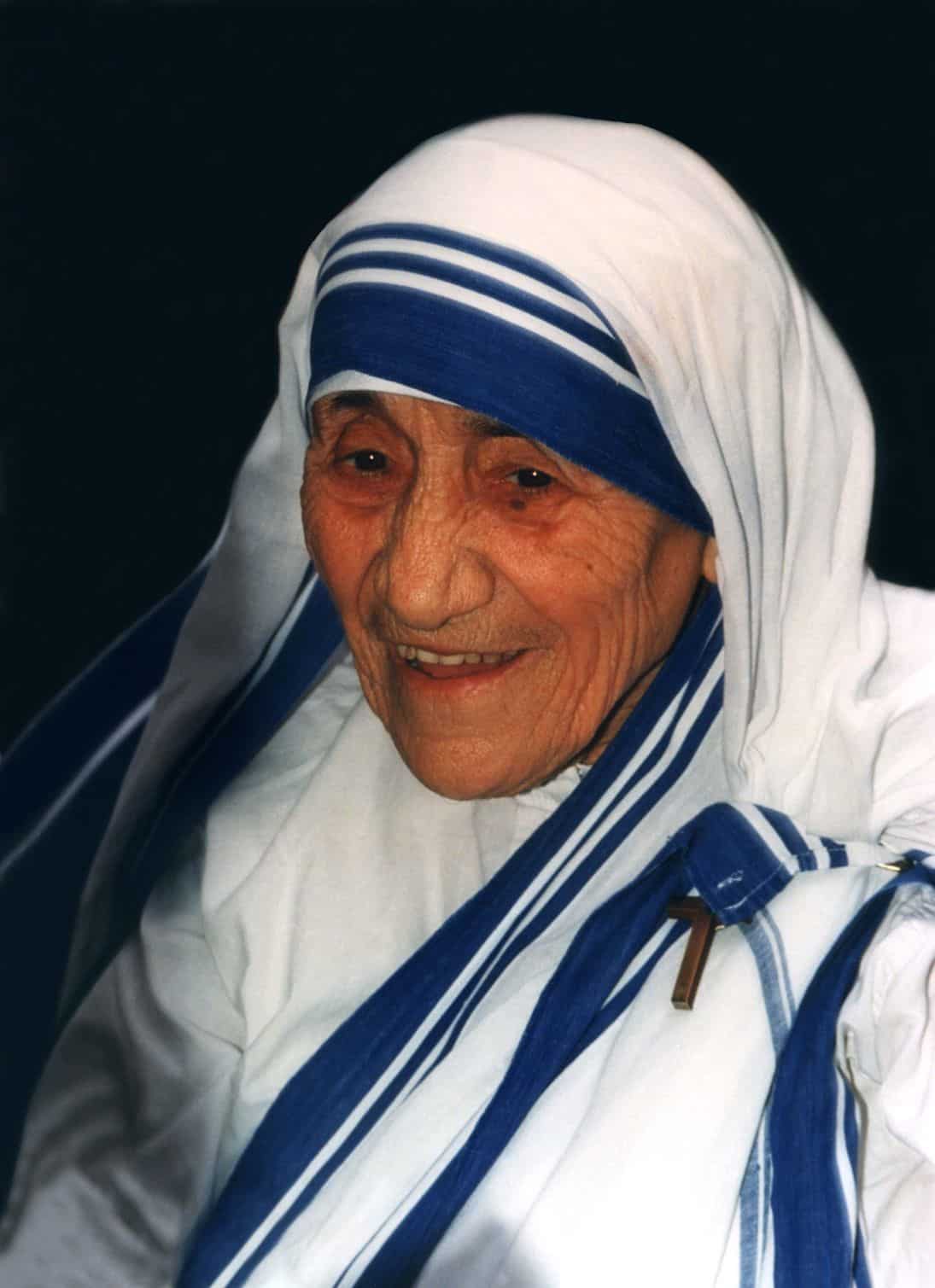
By Kingkongphoto & www.celebrity-photos.com from Laurel Maryland, USA – Mother Teresa best © copyright 2010, CC BY-SA 2.0, Link
Moreover, she liked the Blue color because it is the color of the Virgin Mary and indicates purity. The three blue stripes represent the three vows taken by nuns to lead a life of chastity, poverty, and obedience. This dress would later become the identity of herself and the congregation she started.
Upon quitting her job, Mother Teresa went to Patna to receive basic medical training and help the sick people in the slums. She also obtained Indian citizenship so that she could help the poor while living with them.
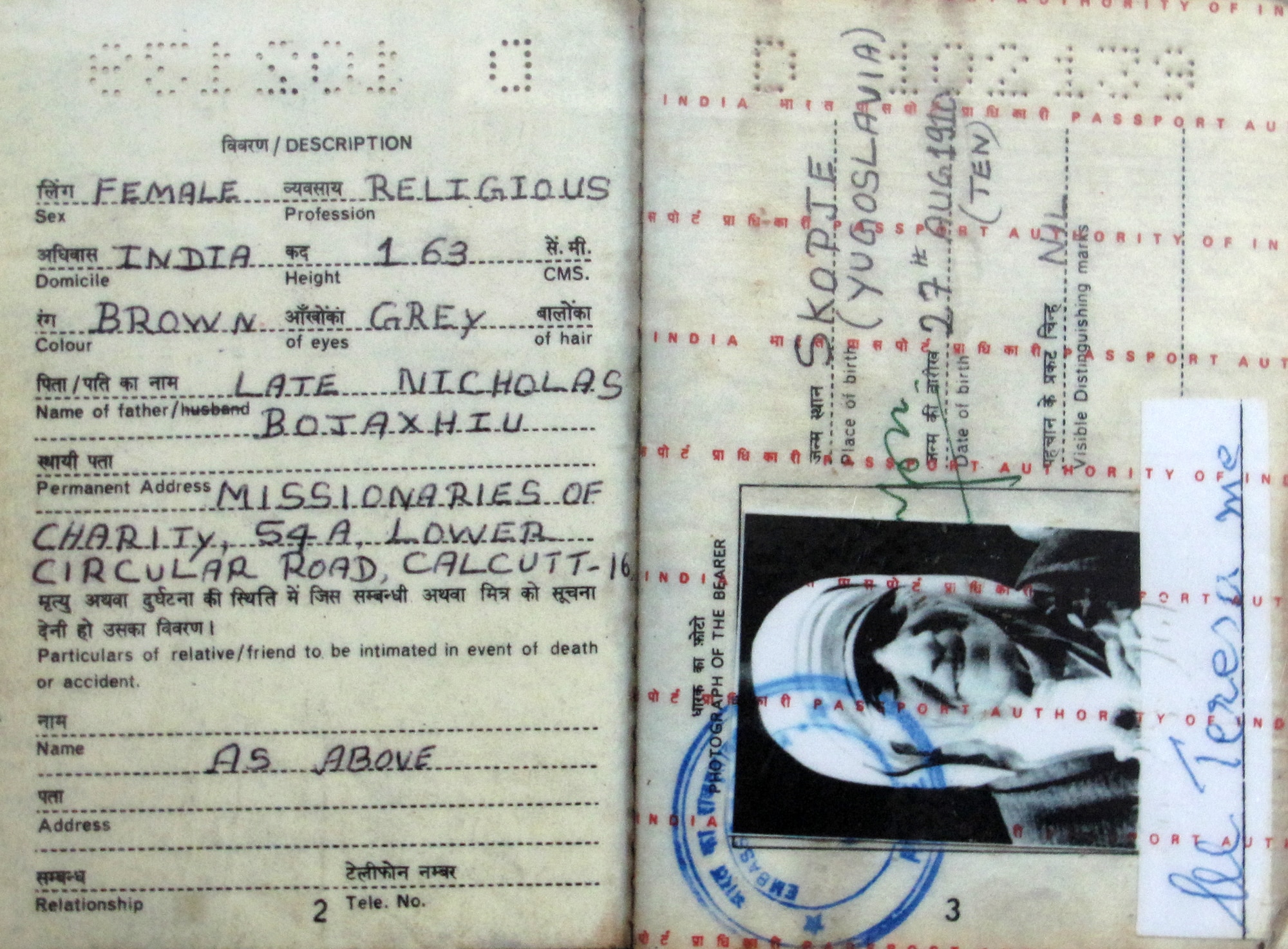
Passport of Mother Teresa
Founding Missionaries of Charity
Mother Teresa began serving the poor with the food and shelter she could get her hands on. Often, she had to beg for food and alms. But she never gave up, because she was doing God’s bidding. Soon, a group of young women joined her to work on her cause. Together, they started a school for poor children. In 1950, Mother Teresa received formal permission from the Vatican to create the ‘Missionaries of Charity.’
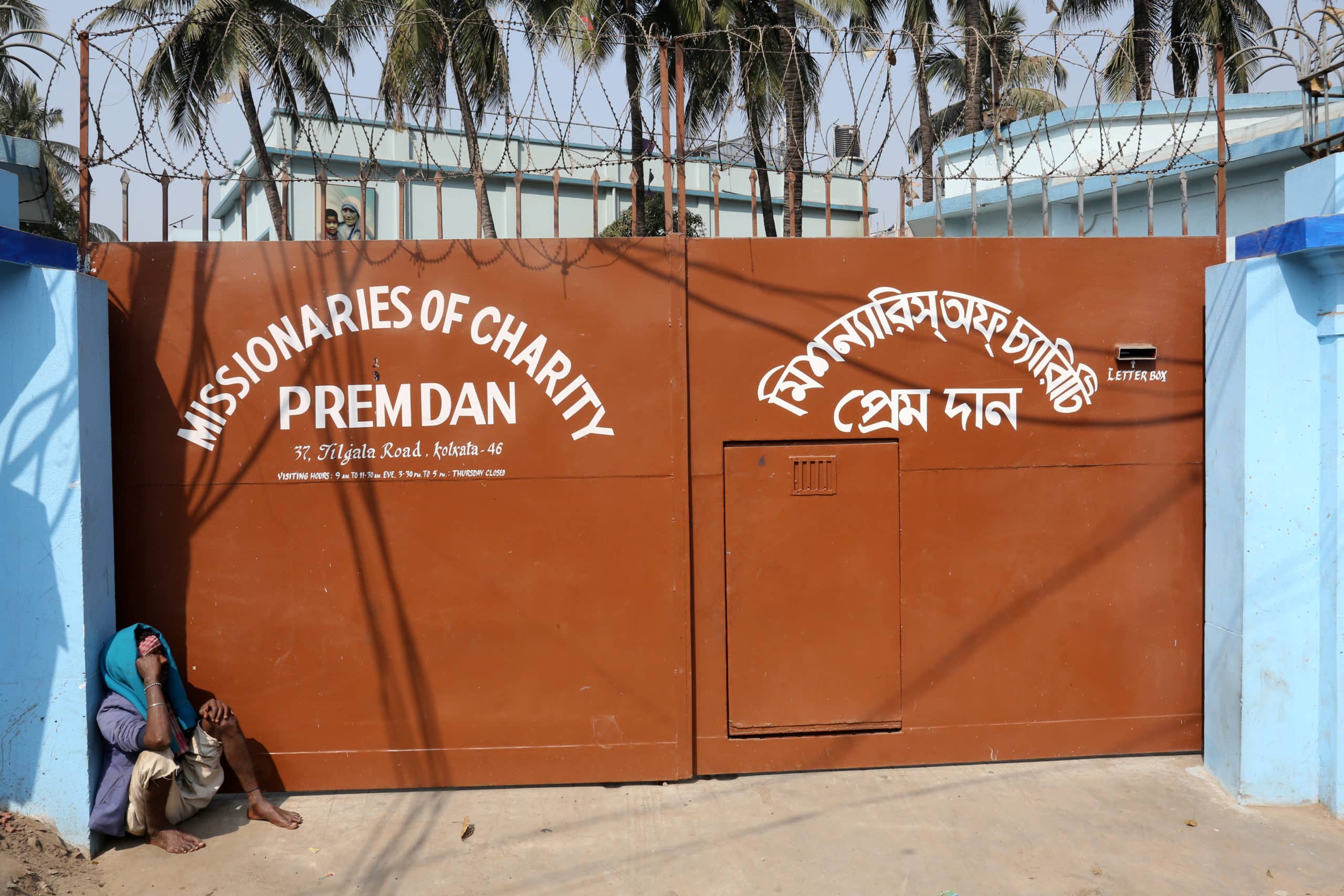
Missionaries of Charity
Two years later, she founded ‘Nirmal Hriday,’ a home for serving the poor, homeless, hungry, diseased, dying, and shunned individuals of the society.
In the following years, she opened a hospice for people with leprosy and the ‘Nirmala Shishu Bhawan’ for orphaned and homeless children. Many outreach clinics for lepers were also established under this charity. By the 1970s, this charity had expanded its hospices worldwide. It had centers all over the world with more than 4000 sisters who were members of this congregation.
Traveling the world to spread the message of humanity
Mother Teresa always said, “I belong to the world.” So, she traveled on humanitarian missions to many countries and provided help to those who were in need. In 1982, she rescued 37 children from a war-stricken hospital in Beirut with the help of workers from the Red Cross.
We ourselves feel that what we are doing is just a drop in the ocean. But the ocean would be less because of that missing drop. – Mother Teresa (source)
In the late 1980s, she visited the Soviet Union twice, to help the victims of the Chernobyl nuclear reactor accident and the earthquake in Armenia. She also visited African countries regularly to help the hungry and the poor population.
Failing health and death
While touring Rome in 1983, Mother Teresa had a heart attack that was followed by a second heart attack in 1989. An artificial pacemaker was fitted to repair her heart, but her condition kept on worsening. She also suffered from pneumonia in 1991 and then had a fall injuring her collarbone in 1996. The Archbishop of Calcutta even ordered a priest to perform an exorcism on her, as he believed that she was under attack by spirits. In March 1997, due to her ill health, Mother Teresa resigned as the head of the charity. She died on September 5th of the same year. A state funeral was arranged for her, and the Pope’s representative performed the last rites. Pope Francis declared her a saint on September 4th, 2016, in Vatican City.
Awards and recognition
Padma Shri, which is awarded by the Indian government to citizens to honor their distinguished contribution, was awarded to Mother Teresa in 1962. Bharat Ratna, the highest Indian civilian award, was awarded in 1980. The Ramon Magsaysay award for peace and understanding was awarded in 1962.
In 1979, she won the Nobel Peace Prize for her service to the poor and the destitute. In the United States, she was awarded the Order of Merit in 1983 and honorary citizenship in 1996. She is the co-patron of the Calcutta Diocese and has a train named after her in the Indian Railways. Albania’s international airport is also named after Mother Teresa.
A special commemorative 5 rupees coin was issued on her 100th birth year anniversary by the Indian government. Many people in Calcutta also revered her as a deity. She has many buildings named after her around the world and has a memorial in her home town in Albania.
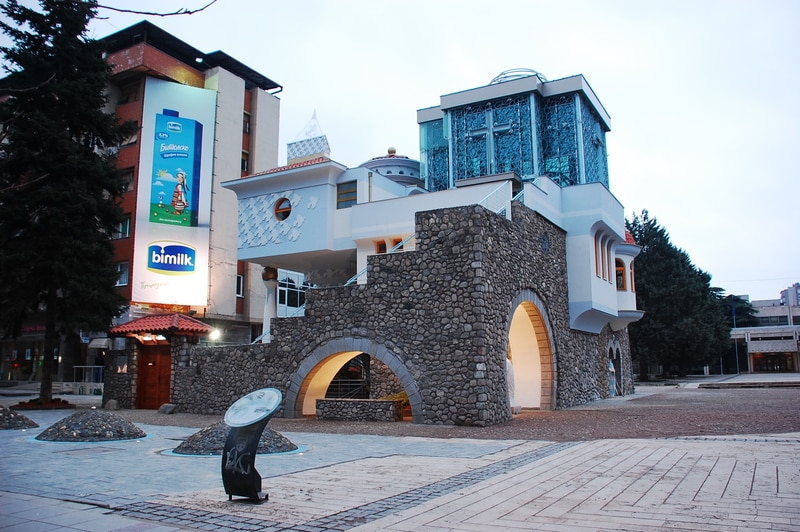
Mother Teresa Memorial House in her native Skopje – By Danielmkd – Own work, Public Domain, Link
Many universities in India are named after her. In 2012, she was ranked the fifth greatest Indian, according to a poll conducted by Outlook India.
Her death anniversary is celebrated as the “International Day of Charity” by United Nations General Assembly.
Controversies
Though she was a missionary who worked all her life tirelessly to eliminate poverty and suffering, there were a few controversies in her life too. According to some critics, the donations that her charity received were not used for the intended purpose.
I feel the greatest destroyer of peace today is abortion – Mother Teresa (source)
She was also vocal against the use of contraceptives and abortion. This sent abortion activists and women rights groups into a rage, who believed there were religious reasons behind her views. Her critics called her a fanatic who was more concerned about religious conversions of people to Christianity. They said that she allegedly asked her members to convert the dying patients to Christianity and baptize them.
A documentary titled ‘Hell’s Angel’ was made by Christopher Hitchens and was released in 1994. The documentary claims that Mother Teresa forced the poor to accept that they are destined for poverty, and the rich are born with luck. He also wrote an essay on her in 1995, criticizing her charitable efforts and media coverage on them.
Mother Teresa was also criticized for her relationship with various controversial personalities like Enver Hoxha, Robert Maxwell, Charles Keating, Licio Gelli, and others.
Facts you probably didn’t know
- Pope Paul VI gave Mother Teresa his limousine with which she raised money for people suffering from leprosy.
- Mother Teresa and Princess Diana met in New York, just days before Diana’s death. She died within a week of Diana’s death.
- Mother Teresa asked the Nobel committee to not host the Nobel banquet in her honor and instead donate the amount to help the needy.
- She was short in height. She was only about 5 feet tall, yet was loved by many people.
- When she first started teaching, she did not have the required resources or money to teach properly. So, she used sticks to write in dirt and teach students.
- She was fluent in many languages, including English, Hindi, Bengali, Serbian, and Albanian.
- A documentary named “Something Beautiful for God” was made on her in 1969. A book was written by the same name in 1971 by the documentary maker.
- In 1997, a movie was made on her, which won the Art Film Festival Award in the same year.
Biography of Mother Teresa of Calcutta
We hope that this biography of Mother Teresa of Calcutta helped you learn about her. The biography of Mother Teresa of Calcutta shows you how Mother Teresa treated other people with empathy and dignity, regardless of who they were. This attitude made her the favorite of the people and earned her a Nobel Peace Prize. She is still remembered for her contribution to those who had been cast away by society. So, even if you are superior to others in terms of money, power, or knowledge, always treat others with dignity and empathy.
The hunger for love is much more difficult to remove than the hunger for bread. – Mother Teresa (source)
If you liked the biography of Mother Teresa of Calcutta, you might like the following biographies as well:
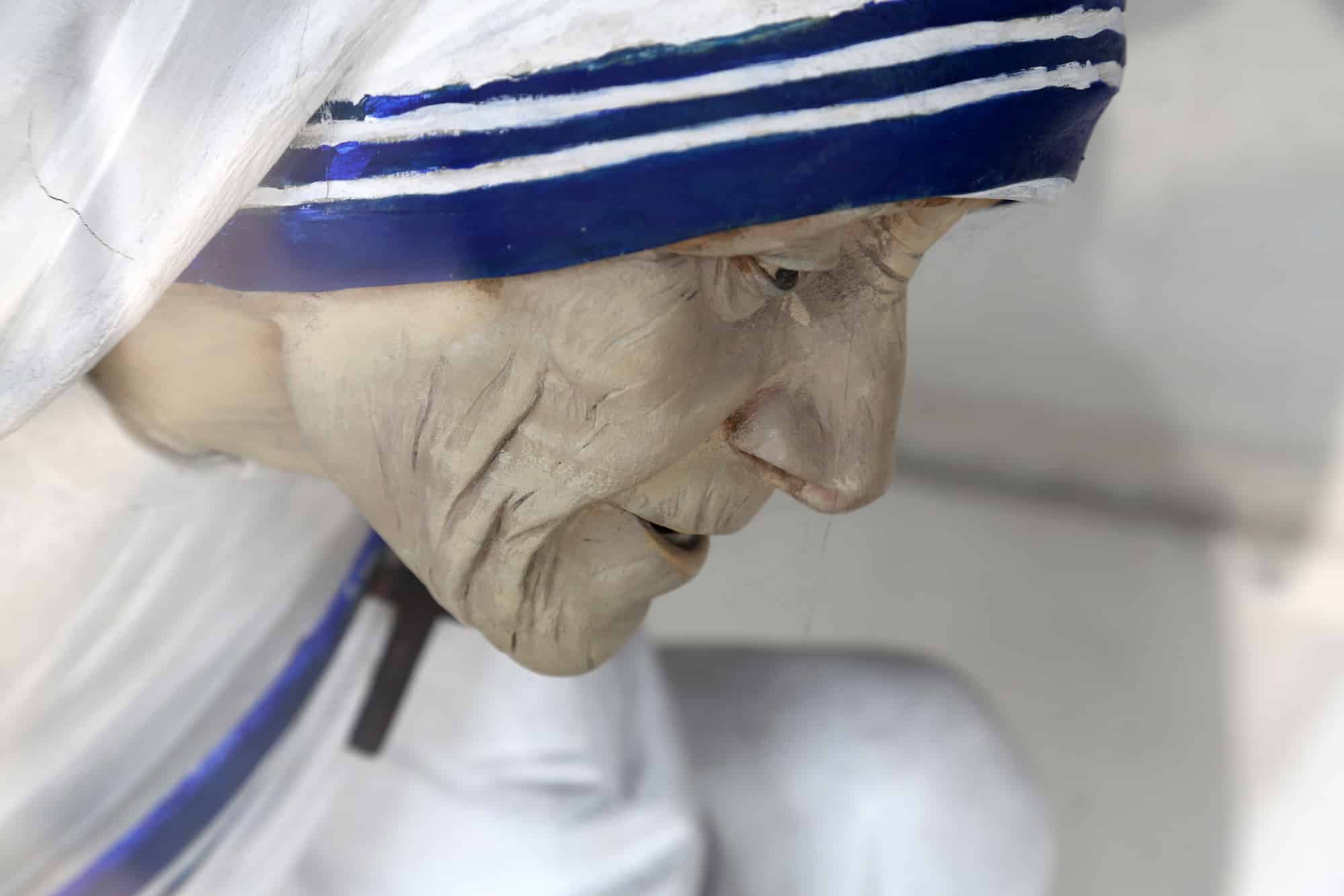

Leave a Reply